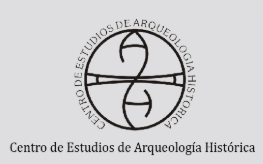Border enclaves south of the Salt River, places of inter-ethnic interaction (19th century)
DOI:
https://doi.org/10.35305/tpahl.v12i3.120Keywords:
Frontier, Natives, Eurocriollos, Fortifications, XIX CenturyAbstract
This work presents a synthesis of the documentation generated throughout the years of research in border sites of the XIX century, central Buenos Aires province. The documents and the material culture recovered in the different field tasks give an account of the interaction of the original communities and the eurocriollos settled on the land within.
The archaeological sites analyzed are related to one of the main trails called “Camino de los Chilenos”, which connected different enclaves until the XIX century that later gave rise to parties and localities, which were part of the South and West Border of the Pampean region. (Langianoet al. 2002; Merlo et. al 2017). They represent the frontier advance from the beginning of the XIX century, until its culmination (1880).
The enclaves presented below are those that have strong archaeological evidence on the relationship of both societies; mainly those that formed the Southern Border. The rest of the sites that are not analyzed in this article also present interaction realities, but with a decrease in cases. These less notable connections may be the product of the dynamics of the Pampean sediment strata, agricultural activity, and urban growth. The constant reuse of the places investigated makes it difficult to relate the material culture of both societies. However, the written documentation provides valuable data although, in certain circumstances, it presents biases both on the part of the document clerk and the designer of the cartography of that time.







